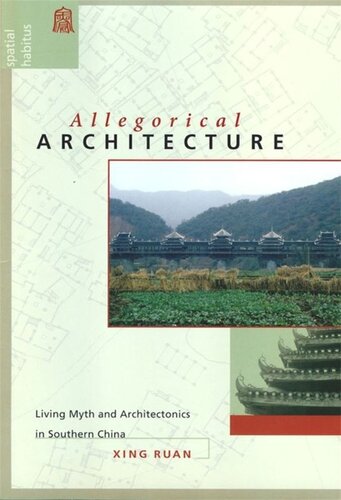

Most ebook files are in PDF format, so you can easily read them using various software such as Foxit Reader or directly on the Google Chrome browser.
Some ebook files are released by publishers in other formats such as .awz, .mobi, .epub, .fb2, etc. You may need to install specific software to read these formats on mobile/PC, such as Calibre.
Please read the tutorial at this link: https://ebookbell.com/faq
We offer FREE conversion to the popular formats you request; however, this may take some time. Therefore, right after payment, please email us, and we will try to provide the service as quickly as possible.
For some exceptional file formats or broken links (if any), please refrain from opening any disputes. Instead, email us first, and we will try to assist within a maximum of 6 hours.
EbookBell Team

4.8
64 reviewsAllegorical Architecture offers the first detailed architectural analysis of built forms and building types of the minority groups in southern China and of the Dong nationality in particular. It argues that Dong architecture symbolically resembles its inhabitants in many ways. The built world is an extension of their body and mind; their experience of architecture is figurative and their understanding of it allegorical. Unlike the symbolism of historical architecture, which must be decoded through a speculative reconstruction of the past, the Dong tell stories about inhabitants in their living state in the recurrent process of ritualistic making and inhabiting of their built world. This book thus offers architectural analysis of both spatial dispositions (building types) and social life (the workings of buildings).
Xing Ruan likens the built world to allegory to develop an alternative to textual understanding. The allegorical analogy enables him to decipher minority architecture less as a didactic "text" and more as a "shell," the inhabitation of which enables the Dong to renew and reinvent continually the myths and stories that provide them with an assurance of home and authenticity. Attention is focused less on the supposed meanings (symbolic, practical) of the architecture and more on how it is used, inhabited, and hence understood by people. Throughout, Ruan artfully avoids the temptation to textualize the built world and read from it all sorts of significance and symbolism that may or may not be shared by the inhabitants themselves. By likening architecture to allegory, he also subtlety avoids the well-worn path of accounting for rich traditions via a "salvage ethnography"; on the contrary, he argues that cultural reinvention is an ongoing process and architecture is one of the fundamental ingredients to understanding that process.
Ruan offers "thick description" of Dong architecture in an attempt to understand the workings of architecture in the social world. Paying attention to Dong architecture within a regional as well as a global context makes it possible to combine detailed formal analysis of settlement patterns and building types and their spatial dispositions with their effects in a social context. Architecture, in a broad sense, is assumed to be an art form in which the feelings and lives of its makers and inhabitants are embodied. The artifice of architecture—its physical laws—is therefore analyzed and contested in terms of its instrumental capacity.
Allegorical Architecture is a work of refreshing originality and compelling significance. It will provide timely lessons for those concerned with the meaning and social sustainability of the built world and will appeal to architects, planners, cultural geographers, anthropologists, historians, and students of these disciplines.